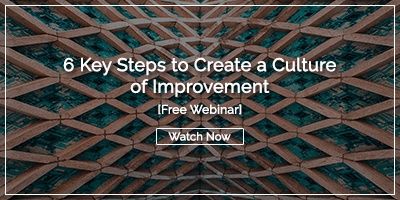We recently had the pleasure of presenting a webinar hosted by Evan Graczyk, Continuous Improvement Manager, and Bob Bell, Financial Planning & Analysis, of Woodfin. Evan and Bob shared their experience and insights implementing continuous improvement through the help of KaiNexus and learning to find the value in small improvements. This post is a recap of the webinar - watch the video linked below for more detail plus additional Q&A.
Building a Better Way, Every Day: The Value of Small Improvements
Based out of Richmond, VA, Woodfin is a multifaceted company with five distinct business segments: heating oil/fuel delivery, convenience stores, residential services (HVAC, plumbing, electrical, etc.), commercial electric and HVAC, and vehicle maintenance.
Their journey into continuous improvement began with some early challenges they experienced within the five business segments, which had grown in very different directions due to lack of communication and wide-reaching geography - leading to different company cultures. Woodfin saw the need to build a strategy to bring unity to the company, along with a robust plan to increase communication within each department.
Woodfin's leadership attended an event hosted by Dr. Alan Robinson to learn about the concept of an “idea-driven organization", the idea that small problems are the key to continuous improvement and how they could implement this idea to help solve their problem, and it stuck with the Woodfin executives.
In Spring 2018, they began their continuous improvement journey with four pilot teams - plumbing, manufacturing, accounting, and construction. Their priority was to build a flexible framework for improvement that would be manageable for people to begin to implement. This required the team to participate, be respectful, try to find the best answer, and truly listen to the participants. By involving everyone throughout this process (especially the front-line workers) small problems faced every day can be recognized and fixed quickly.
But why focus on small problems? Typically, these are something people experience every day and that management rarely knows exist. Fixing these small problems results in:
- Solving problems quicker
- Easily replicable solutions
- Rarely requiring large capital investment to solve
- Everyone in the organization can participate
- People are empowered to solve their own problems
An example of the value of small improvements was Woodfin's issue with their one and only sewer machine. The plumbing team was always having trouble locating it, and when they did, it was often broken or missing pieces.
An employee suggested buying smaller, portable machines to keep on their trucks so they wouldn’t have to search for the large one. Additionally, they included serial numbers on these smaller machines to ensure they wouldn't get lost and organized replacement inventory to prepare if something did go wrong. After implementing these changes, the plumbing team saved about 20 hours per week in peak season.
But of course, when implementing a new practice, there are always going to be concerns that come up.
Evan explains that they saw these concerns come to fruition within their construction department, where the standard idea network procedure implemented across the organization was not working well. Unlike other departments, the construction department consists primarily of front-line workers whose problems change rapidly
The team performed a root cause analysis to understand the disconnect on this team. Through this analysis, three main issues were discovered and are as follows:
- Managers were not provided adequate training
- The weekly meeting structure was not efficient
- The expectations were not clear for the team
With these new insights in mind, they decided to make some changes. Their first change was to begin involving everyone from the ground up in the process, arming managers with the knowledge and training to efficiently answer any questions from their team. Next, change longer weekly meetings to shorter daily meetings to identify opportunities together in a more casual environment that aligns expectations. This helps the team build a habit of finding small improvements in their day-to-day rather than trying to find one groundbreaking idea. With this new plan in place, Evan credits KaiNexus for being the platform to help streamline and encourage these changes.
Following the implementation of continuous improvement and KaiNexus, here are the lessons that Evan and Bob learned:
- Managers play a crucial role in the early development of an idea team as a mentor and encourager
- Establish and communicate clear expectations for ALL roles - include everyone in this journey
- Remain open and encourage team members to suggest opportunities for improvement to the overall process
Bob ends the presentation with a powerful quote - "What if we train them and they leave us, but what if we don't train them and they stay?" This speaks volumes about the importance of continuous improvement and investment in your people.
We want to give a big thank you to Evan and Bob for taking the time to share their continuous improvement journey with us today. Woodfin is an excellent example of how small improvements can lead to big results - all possible through the commitment of a team and the KaiNexus platform. You can watch this webinar and check out other informative presentations here.



Add a Comment